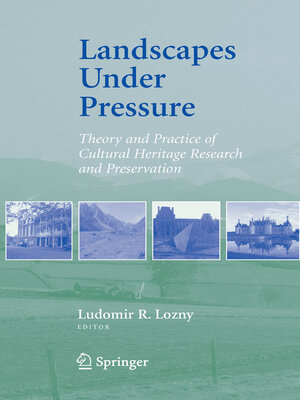Landscapes under Pressure
ebook ∣ Theory and Practice of Cultural Heritage Research and Preservation
By Ludomir R. Lozny

Sign up to save your library
With an OverDrive account, you can save your favorite libraries for at-a-glance information about availability. Find out more about OverDrive accounts.
Find this title in Libby, the library reading app by OverDrive.



Search for a digital library with this title
Title found at these libraries:
| Library Name | Distance |
|---|---|
| Loading... |
LUDOMIR R. LOZNY Hunter College This book has a long history. In December 1998 I organized a two-day international symposium at Hunter College, New York to discuss issues related to research and preservation of cultural landscapes. The symposium was sponsored by a grant from the Wenner-Gren Foundation, and co-sponsored by the North Atlantic Biocultural Organization and the Department of Anthropology, Hunter College, CUNY, New York. Several scholars from the USA and Europe accepted my invitation to participate. Problems discussed oscillated around the idea of cultural landscapes and issues related to identifying, researching and preserving cultural landscapes. Among most frequently asked questions were: What constitutes cultural landscapes? How do we recognize cultural landscapes? How do we define cultural landscapes? The concept of cultural landscape has been discussed by human geographers, historians, archaeologists, environmentalists, pres- vationists, etc. The consensus was that cultural landscapes are multivocal and incorporate elements which are generally classified in two groups: tangible empirical evidence of human behavior, and intangible, not always recognized symbolic meanings. It is worth keeping in mind that in addition to all material evidence, the most appealing identification of cultural landscapes (or places) includes memories and variety of meanings. "Landscapes under Pressure" presents ideas and pragmatics applied to research and preservation of tangible manifestations of cultural landscapes, but it also points out the significance of their nonmaterial elements. The approach to investigate and preserve cultural resources is known as culture resource management (CRM).







